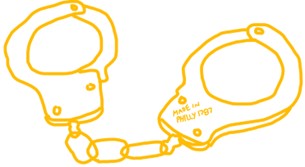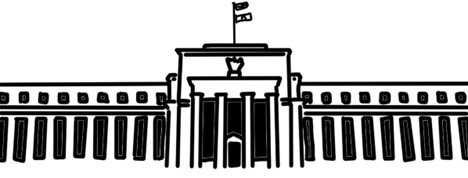The Gist: In the republic’s early years, cash was provided not by the government but by banks.
A partial review of Pieces of Eight, Constitutional Money, and Money, Free and Unfree.
Part two of four of my series on Constitutional Money. Click here for part one, here for part three, and here for part four.
The Founders voted by 9 states to 2 at the Constitutional Convention not to give the federal government the power to print money. For more than seventy years, the government only coined metal money. What happened?
Not a constitutional amendment, as is legally required. No, the government abandoned its constitutional constraint in a national emergency (the Civil War) as its officials remorsefully insisted that paper money was a merely temporary necessity. Whether paper money was necessary to win the war is debatable – the vast majority of the Union’s revenue needs were met by debt and taxes – but it has proven quite permanent, never mind its constitutional problems. The result has been exactly what the Founders feared: a government that has grown bigger and bigger, free of golden handcuffs.

Figure 1. You might think that the government also required a golden restraining gizmo akin to Hannibal Lecter’s – but the handcuffs weren’t broken, they were just unlocked.
But we’re getting ahead of ourselves, as we left off our story at the close of the constitutional convention. Within two years, the Washington administration chartered a national bank and – my gosh – it started printing money! At this point you may be thinking that all that detail about coinage in our last correspondence was smoke and mirrors or the legal equivalent of how many angels can dance on the head of a pin. Is the Federal Reserve basically what the Founders had in mind from the very beginning?
Far from it! The U.S. government wound up chartering two national banks at different times in the early years of the republic and they had very particular features to protect the Founders’ intent of a limited government. Both national banks were 80% owned by private individuals, were categorically prohibited from buying federal government debt, and backed their paper with physical precious metal in their vaults redeemable upon demand. Further, both banks’ directors were personally liable for excessive debts and bad loans to local or foreign governments.

Figure 2. By contrast, the Fed today is a government institution categorically encouraged to buy federal government debt with paper backed by nothing and led by directors who, regardless of the wisdom of their actions, leave for lucrative consulting gigs.
Yes, the national government freely accepted the national banks’ notes as taxes – but no American was required to accept them to satisfy debts or purchases (they were not “legal tender”). The government further limited itself by not paying the interest it owed on its debt in the banks’ notes. Edwin Viera concludes that in designing the first national bank, Alexander Hamilton “followed very closely Adam Smith’s description of the Bank of England… It was not at that time a modern-day central bank; it had no statutory or implied authority to control the community’s stock of money.”
Even this was super-controversial, certainly one of the top five ongoing issues dividing the country in our early years. One significant objection was to crony capitalism: the federal government was dramatically empowering a single gigantic institution, giving it a significant edge against its local banking competitors. The national banks stored the government’s money and were able to use it to support their normal loan operations. Worse, they had a role in regulating the banking industry. And the second national bank’s popularity among populists was not helped by the facts that it was mostly owned by only a few hundred American families and 3/4 of its investors were European.

Figure 3. Following the introduction of the Kronies, it’s now time for a Big G origin story comic!
The other objection was legal: what part of the Constitution authorized the federal government to charter a national bank? McCullough v. Maryland (1819) is a landmark U.S. Supreme Court case which is conventionally understood to establish the supremacy of the federal government over the states. Maryland had tried to impose a tax on the second national bank and Chief Justice John Marshall ruled against the state, famously articulating that “the power to tax is the power to destroy” and that states couldn’t interfere with the federal government’s performance of constitutional duties. But was that what was happening here? If Maryland had been trying to impose a property tax on a military base, everyone would agree that would be unconstitutional. But here Maryland was trying to tax a corporation that was 80% private and engaged in competition with its local banks.
John Marshall was a reliable Federalist who was not about to dismantle a revival of one of Alexander Hamilton’s big ideas – so he found that the chartering of a national bank was “necessary and proper” to carry out the government’s constitutional duties, in particular that the bank aided in the collection of taxes and the spending of revenue. Unfortunately, Marshall applied the loosest meaning to the word “necessary,” adopting the Hamiltonian argument that the word only meant “convenient” or “useful.” Marshall’s interpretation was a gift to Congress that would keep on giving. The natural and public meaning of the word “necessary” would have killed the bank because, as the economist Richard Timberlake asks, how could the national bank have been “necessary” to carry out the government’s constitutional duties if the government had managed to do so without one? Shouldn’t the courts be skeptical of the federal government’s claims that they need new big powers to fulfill their old enumerated ones?

Figure 4. Think of government as the junior high schooler who insists: But I need the latest smartphone so we can stay in touch! But I need designer clothes to look my best! But I need to have a Playstation to have any friends! But I need clean needles to avoid dire consequences!
Andrew Jackson would thunder: Extremely skeptical! As President, Jackson would succeed in destroying the national bank as an institution, but he also attempted to lay down a constitutional marker for the future. Jackson believed that the President was a co-equal interpreter of the Constitution and insisted that “Mere precedent is a dangerous source of authority, and should not be regarded as deciding questions of constitutional power except where the acquiescence of the people and the States can be considered as well settled.” Jackson’s unfulfilled hope was that future courts would take his veto message as seriously as Marshall’s opinion in McCullough. As a practical matter, Jackson initially transferred the government’s money to politically aligned local private banks – which proved not to be a great idea, given how overregulated and partisan they were. James Knox Polk better executed the Jacksonian vision by establishing the separation of bank and state, which worked well until the Civil War.

Figure 5. “The Bank, Mr. Van Buren, is trying to kill me but I shall kill it!” – Andrew Jackson, no stranger to duels, pleading self-defense.
Before we get to the Civil War, I should briefly touch on three additional items of relevance for the legal eagles: first, during the War of 1812, the U.S. government sold paper bonds that it also accepted for tax purposes, which feels a bit like paper money. But the bonds were in such large denominations that they were practically used mostly by banks for their reserves; unlike modern currency, they paid 5-7% annual interest; and the vote to make them legal tender failed. Timberlake describes the total number of such bonds before the Civil War as “nominal” in amount. In 1844, an inspired Treasury Secretary suggested circulating paper bonds that yielded 0.001% interest but Congress rejected the idea as unconstitutional.
Second, in 1834, Congress exercised its authority to “regulate the value” of its coinage by redefining the ratio at which it would exchange gold and silver. This incident is often treated by historians as a debasement of the dollar and an indication of Congress’ substantial powers over money. In fact, the ratio set by Hamilton had been overcome by market forces, such that gold was leaving the country for better value abroad. Viera argues that Congress reset the value to the then-market rate but was not especially good about keeping up with it. Timberlake argues the whole point of the provision was to ensure that gold and silver were in regular use in the U.S. Regardless, the practical effect was that gold started to be overvalued compared to silver and the U.S. shifted from a silver standard to a gold standard.
Third, there was legal wrangling regarding the constitution’s explicit prohibition on the states printing money. When the government of Missouri tried to print money for loans to indebted farmers, the Supreme Court correctly found that to be unconstitutional. When the government of Kentucky started a bank that it owned 100% of and that bank started printing money, the Supreme Court found – incorrectly, in my view – that to be constitutional. By the latter case, Jacksonians had taken over the court and their enthusiasm for federalism had gotten the better of their constitutional interpretation. That being said, Kentucky did suspend sovereign immunity when it came to the bank – so the bank could be sued for problems, including failure to redeem in precious metals – and the notes did not circulate as legal tender. Most banks, however, were privately owned but chartered by the states. Some hard money advocates objected to any paper money at all on the basis that if the state itself could not print, neither could it authorize private institutions to do so. In my view the courts correctly disagreed: the limit was designed to restrain government, not private enterprise.
Recall that in our last email we dug deep into the historical context and actual text of the Constitution to see what the Founders thought about monetary policy. In this email, you can see how that played out over the first seventy years – yes, the Founders disagreed on certain things from the start, especially a national bank, but even the most generous contemporaneous interpretation of the Constitution was very different from what we practice today. In our next email, we will follow the paper trail that begins with the Civil War.

Figure 6. Click here to acquire the unabridged version of Pieces of Eight: the Monetary Powers and Disabilities of the United States Constitution (9/10), a learned and deep textual analysis that I’ve attempted to summarize as best as possible. You can also check out the related original document collection at the University of Chicago for the coinage power and the borrowing power.

Figure 7. Click here to acquire Constitutional Money by Richard Timberlake (8/10), in which an economist reviews the U.S. case law around money and offers both economic commentary and a layman’s legal analysis of original public meaning uncluttered by the typical law school penumbras and gobbledygook. Timberlake insists: “The money clauses in the U.S. Constitution are brief, simple, and explicit; the humblest mind can understand them without elaborate interpretation.”

Figure 8. Click here to acquire Money Free and Unfree by George Selgin (9/10), a collection of essays by one of the leading free banking economists in the United States, opening with a thought experiment about what kind of monetary system a dictator would create to increase his power but also including a history of 19th century U.S. money and an evaluation of how the Federal Reserve has performed according to its own preferred standards in its first 100 years. Also check out his book explaining the theory and practice of free banking.
Thanks for reading! If you enjoyed this, forward it to a friend: Know anyone who is interested constitutional originalism? How about anyone desiring limited government? Or anyone who has ever used money?
For more, check out my archive of writings, including my review of Literally Making Money.
I read over 100 non-fiction books a year (history, business, self-management) and share a review (and terrible cartoons) every couple weeks with my friends. Really, it’s all about how to be a better American and how America can be better. Look forward to having you on board!
